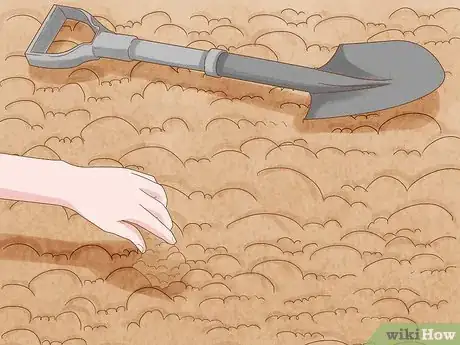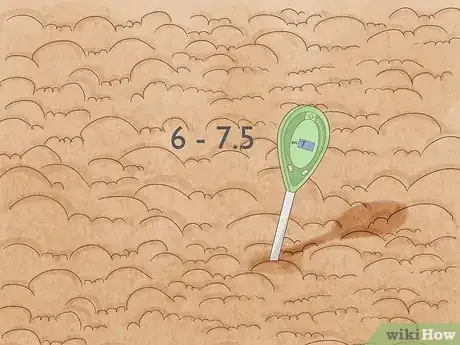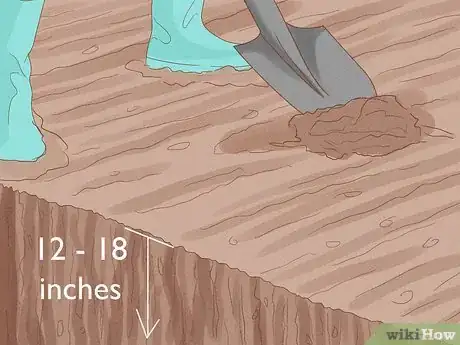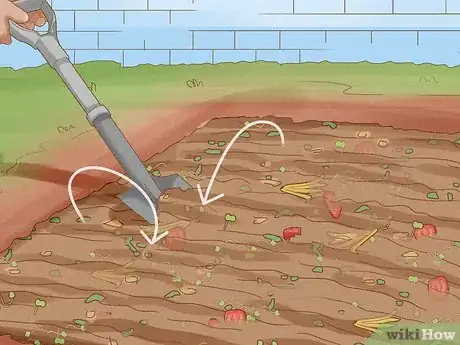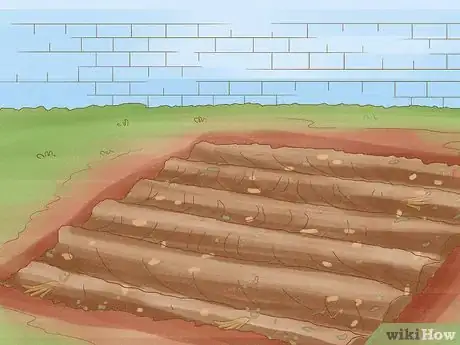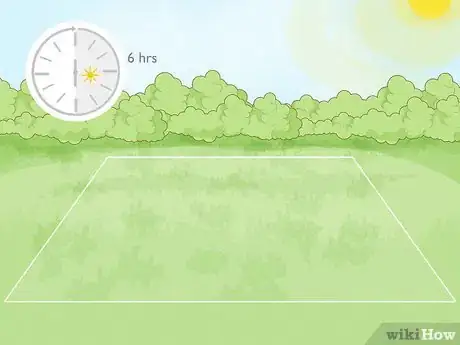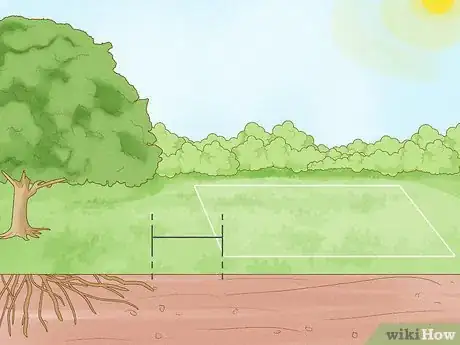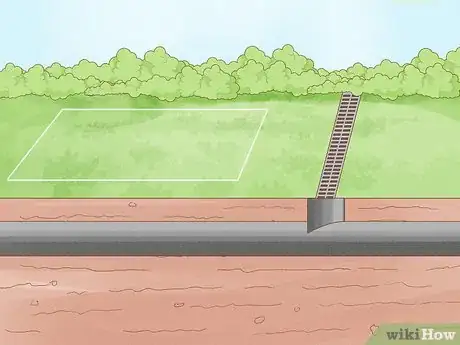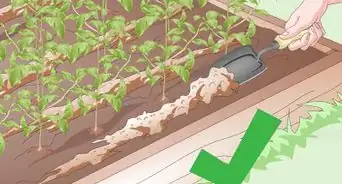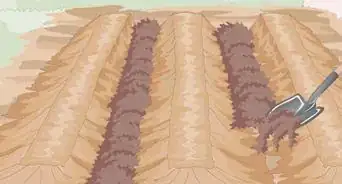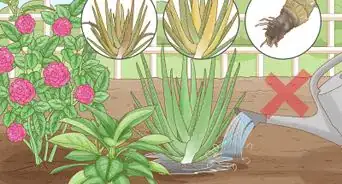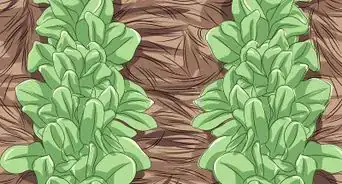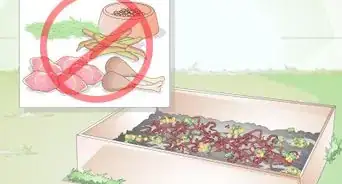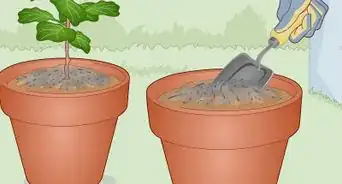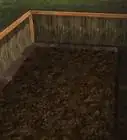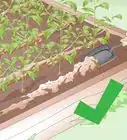This article was co-authored by Steve Masley. Steve Masley has been designing and maintaining organic vegetable gardens in the San Francisco Bay Area for over 30 years. He is an Organic Gardening Consultant and Founder of Grow-It-Organically, a website that teaches clients and students the ins and outs of organic vegetable gardening. In 2007 and 2008, Steve taught the Local Sustainable Agriculture Field Practicum at Stanford University.
This article has been viewed 274,182 times.
Preparing soil that will produce a healthy garden is more complicated than choosing a spot and digging holes to plant in. You need to choose a location that has good sun exposure, is free of root systems, and has good drainage. You’ll need to test the soil for sand and clay content, and it’s good to have a garden center test a sample for the pH level and nutrient concentrations. Then you will turn the soil over, removing rocks and roots. Lastly, you will need to add organic matter, soil amendments like clay and sand, and smooth out the whole plot before planting.
Steps
Checking the Soil Condition
-
1Sample the soil makeup. Use a shovel to dig into the soil, and grab a handful of it. See what the soil seems to be made up of. It might be sandy or have a lot of clay, or it may be good rich dirt. Soil with too much sand or clay will not usually grow garden plants very well.
- The soil should feel fluffy, like it is full of air, because this means it gets plenty of oxygen.
- This is also a good time to see if there are lots of worms and insects in the soil, as this usually means the soil is fairly rich.
- Depending on what the soil is like in your area, you can add soil amendments later to get it to the proper makeup.
- Generally, dark brown or nearly black soil is best because it tends to mean the soil has a lot of decomposing organic matter and is rich in nutrients. Pale brown or nearly yellow soil tends to be less nutrient rich.
- You can get a better understanding of the makeup of your soil by taking samples from several places. Place the samples in a mason jar and mix them together. When the soil settles, you'll be able to better see the soil's makeup.
-
2Test for nutrients. For the best results, take a sample of the soil to a garden store or county extension office so they can test it to see what nutrients are lacking, and see what the pH level is. You can also buy a home test kit, but this will not be quite as thorough.[1]
- Ideal pH for most vegetable plants is around 6.0-7.5. Adding lime is a common way to adjust the pH of soil, but it is a long process that take about six months to fully take effect in the soil.
- You can make up for other lacking nutrients with fertilizer and compost, which will be discussed more later.
Advertisement -
3Evaluate how wet the soil is. When you are first starting a garden, especially if you’re starting it at the beginning of Spring, you need to wait until the soil has dried out enough. If you squeeze a handful of the soil and it stays packed together, it’s probably still too wet.
- You can perform this test once a week or so until the soil is dry enough to begin garden preparation.
- Soil that has a high clay content will pack more, but this does not necessarily mean the soil is too wet.
Breaking Ground for the Plot
-
1Stake off the perimeter of your garden. Before you start digging, make a decision about the size and shape you want the garden to be. If it will be three or more rows, make sure you account for extra space to walk between the rows. For only two rows, you can tend the garden from the outside of each row.
- Stick four stakes into the ground to form the rectangle of the garden plot.
-
2Dig up the top couple of inches of sod. You need to use a shovel to slice up under any grass, moss, or weeds that are currently growing where you have planned your garden. Make sure to dig deep enough to get weeds out at their root. You may want to go about four inches deep for this step.[2]
- All of this can go to the compost pile for later use, but shouldn't be incorporated back into the soil until it has composted.You may also want a bin ready just for composting this layer outside of other composts you might have.
- If you have a tiller, you don't have to dig up the existing plants; instead, till in whatever is currently growing. After you till, you should be able to remove the plants, roots and all, from the broken up soil. This is better for the soil because the remaining dead plants and roots will break down and contribute organic matter to your soil.
-
3Turn over the soil using a shovel or motor driven rotary tiller. For new plots, you’ll want to turn the soil over about 12-18 inches deep. You may want to dig that deep into the soil with a shovel, and then go over the plot a second time with a tiller to break the soil up.[3]
- As you dig through the soil, remove any large stones, along with any roots or debris (eg, bits of metal, plastic etc) you encounter. You may need to make more than one pass to break up very compacted soils.
- This may be the most time consuming part of the project, especially if you end up finding a lot of rocks or other debris. It’s good to have a garbage can nearby in which you can throw anything you find in the soil.
Adjusting the Soil Composition
-
1Add lime or sulfur if necessary. Soil pH is one of the most important aspects to healthy soil that will grow healthy plants. Since you tested the soil earlier, make sure to use this information. Lime will help raise the pH level if it is too low, while sulfur will help lower it if the pH is too high.[4]
- A garden center will help you figure out the exact amount of lime you need for your garden. It depends on how large the garden is and how much you need to change the pH. Spreading lime requires a specific method, so don’t assume you just throw some on the soil.
- You’ll also want to seek guidance regarding sulfur use that is specific to your garden’s needs.
-
2Add other soil amendments as necessary. When you check the soil composition and have it tested, you can find out if you need to add sand, clay, or other topsoil to make the soil the best possible mixture for your garden. This is something that a garden center can be exceptionally helpful for.[5]
- Base any amendments on the results of your soil test.
- You don’t want to overdo it with adding sand or clay, so try to add a little at a time to even out the overall texture of the soil.
- You may want to add gypsum or perlite which help to aerate the soil if your test reveals low oxygen content.
- Sphagnum peat moss is a helpful amendment if you can tell the soil is pretty dry as it helps retain moisture and slowly release it into the soil.
- You may need to add some basic fertilizer which can help balance the nitrogen, phosphorus, calcium, magnesium, and potassium, which are all vital to healthy plant growth.
-
3Add organic matter to the soil at a ratio of 1:1. This means, try to add as much organic matter as you can so the top layer of your garden is half the soil that was already there and half added organic matter.[6]
- Organic matter can include shredded brown and green leaves, horse manure, wood chips, or compost, such as fruit and vegetable scraps. You don’t not need to add organic matter to the entire 12-18 inches you previously dug, but add it to the top 6-8 inches.
- Do not add meat, fish, or dairy as organic matter into the soil. Likewise, if you choose to maintain a compost bin or pile, never add these types of scraps to it.
-
4Turn the soil over again with shovel or tiller. Since you have added multiple materials to the soil, you want to make sure it is all mixed through the soil evenly. This may take going over the entire garden plot 2-3 times to ensure that it seems mixed thoroughly.
- Don't mix your compost in too deeply. Till the soil lightly to mix the materials into the top few inches of soil, where a majority of the plants' feeder roots will be looking for nutrients.
- It might be a good idea to lightly water the soil after turning it again so that everything can soak together.
-
5Rake the soil smooth. You want the soil to stay loose, so don’t walk all over the new plot as you rake. If you have included room for walkways between plant rows, you can walk on those areas as you rake. Gently pull the rake over the soil so the whole plot is as even as possible.
-
6Create rows. Starting at the end of the area you've marked off for your garden, shovel the soil from your planned rows onto the planting bed. This will raise the beds a little, which helps with drainage and helps warm the soil. You can then line your pathways with newspaper or cardboard and top that with mulch.
Choosing a Garden Location Beforehand
-
1Choose a spot for the garden that has good exposure to sunlight. For the best results in your garden, six hours of sunlight is suggested. So it is best to avoid putting the garden too close to your house or in areas where it will be covered by the shade of a tree.[7]
- If you have lots of trees, houses nearby, or other things that would block the sun, you may need to pay attention to your yard for a week or so to find the spot that gets sunlight for the longest time each day.
-
2Avoid root systems. A tree’s root system can spread far out underground, even if you can’t see the roots. If you try to set your garden up too close to a tree, the root system will cause problems with your plants. Try to go at least 10 feet away from the furthest point out that the branches reach.
- As you start to dig later on, you’ll be able to tell if the soil has a lot of tree roots or not. If the spot you chose ends up having too many roots, it may be best to move to a different spot if possible.
-
3Pick a spot with good drainage. You need to find a balance between a spot that will not hold any water in the in soil, and a spot that will flood every time it rains. Look around your yard for spots where the grass seems to grow best, as these spots probably drain well. Ideally, your garden should be in a flat, even part of the yard.
- To find a spot that gets good drainage, wait until a few hours after a heavy rain and then go look around your yard for places where water is pooling. Avoid placing your garden in these spaces.
Expert Q&A
Did you know you can get expert answers for this article?
Unlock expert answers by supporting wikiHow
-
QuestionHow do you prepare soil for a vegetable garden?
 Steve MasleySteve Masley has been designing and maintaining organic vegetable gardens in the San Francisco Bay Area for over 30 years. He is an Organic Gardening Consultant and Founder of Grow-It-Organically, a website that teaches clients and students the ins and outs of organic vegetable gardening. In 2007 and 2008, Steve taught the Local Sustainable Agriculture Field Practicum at Stanford University.
Steve MasleySteve Masley has been designing and maintaining organic vegetable gardens in the San Francisco Bay Area for over 30 years. He is an Organic Gardening Consultant and Founder of Grow-It-Organically, a website that teaches clients and students the ins and outs of organic vegetable gardening. In 2007 and 2008, Steve taught the Local Sustainable Agriculture Field Practicum at Stanford University.
Home & Garden Specialist
-
QuestionWhat is the best soil for growing vegetables and what is the best depth
 Community AnswerSoil that has a lot of clay or a lot of sand usually won't grow vegetables well. You'll also want the soil to have lots of organic matter and a balanced Nitrogen, Potassium, Phosphorus ratio. Vegetables are often planted about 6 inches deep, but you'll want at least another 12 inches of good soil beneath that.
Community AnswerSoil that has a lot of clay or a lot of sand usually won't grow vegetables well. You'll also want the soil to have lots of organic matter and a balanced Nitrogen, Potassium, Phosphorus ratio. Vegetables are often planted about 6 inches deep, but you'll want at least another 12 inches of good soil beneath that. -
QuestionWhat is site clearing?
 Community AnswerThis is simply clearing the site to remove any and all debris. Such debris should be removed prior to gardening.
Community AnswerThis is simply clearing the site to remove any and all debris. Such debris should be removed prior to gardening.
References
- ↑ https://www.planetnatural.com/garden-soil/
- ↑ https://garden.org/learn/articles/view/1316/
- ↑ http://eartheasy.com/grow_backyard_vegetable_garden.html
- ↑ http://www.pennington.com/resources/fertilizer/gardening/the-gardeners-guide-to-soil-amendments
- ↑ https://garden.org/learn/articles/view/1316/
- ↑ https://www.planetnatural.com/composting-101/
- ↑ http://eartheasy.com/grow_backyard_vegetable_garden.html
About This Article
To prepare soil for a garden, start by digging up or tilling the top couple inches of soil to remove any grass, moss, or weeds. Then, turn over the top 12-18 inches of soil with a shovel or rotary tiller and remove any debris you come across, like rocks or roots. If the pH level of your soil is too high, add sulfur, and if it's too low, add lime. You can also add sand if the soil is too wet or clay if it's too dry. Regardless of your soil's composition, add organic matter to it, like compost or wood chips, so there are equal parts soil and organic matter. To learn how to choose the best spot to create a garden, scroll down!
